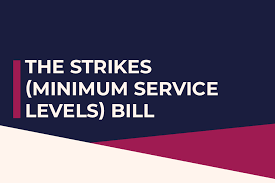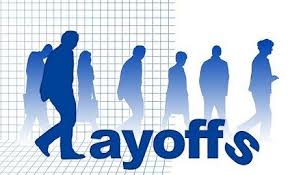Employment law in Greenland (Denmark)
Employment law in Greenland is governed by a combination of Danish labor law and local regulations specific to Greenland. As an autonomous territory of Denmark, Greenland follows much of Denmark's national employment laws but also has certain legal frameworks adapted to its unique needs. The Labour Market Act of Greenland and other labor-related laws set out the rights and obligations for both employees and employers. Additionally, employment laws in Greenland are influenced by Denmark's labor regulations, which are known for providing strong worker protections.
Key Aspects of Employment Law in Greenland:
1. Employment Contracts
Written Contracts: Employment contracts in Greenland must be in writing. The contract should clearly outline the terms of employment, such as the employee's job responsibilities, salary, working hours, benefits, and the duration of the employment.
Fixed-term vs. Permanent Contracts: Employees can have either fixed-term contracts or permanent contracts. Fixed-term contracts are typically used for temporary work or projects, while permanent contracts are for ongoing, indefinite employment. A fixed-term contract should specify the duration of employment, and the employee should be informed if the contract is going to be extended or terminated.
Probationary Period: Many contracts in Greenland include a probationary period, typically lasting for 3-6 months. During this time, both the employer and the employee can terminate the contract with shorter notice.
2. Working Hours
Standard Working Hours: In Greenland, the typical full-time workweek is 37 hours (7.4 hours per day over 5 days). However, certain industries or jobs may have different working hour arrangements.
Overtime: Overtime is allowed, and employees are generally compensated for extra hours worked beyond their regular hours. Overtime pay is typically higher than the standard hourly wage (often 1.5 times the regular pay). Specific overtime rates may be determined by collective agreements.
3. Minimum Wage
No National Minimum Wage: Greenland does not have a legally mandated national minimum wage. Instead, wages are typically negotiated through collective bargaining agreements (CBAs) between trade unions and employers in specific sectors. This means that the minimum wage can vary depending on the industry, occupation, and collective agreements.
Collective Agreements: Many sectors in Greenland, such as public service, construction, and hospitality, have sector-specific CBAs that set out minimum wage levels and conditions for workers in those industries.
4. Paid Leave
Annual Leave: Employees in Greenland are entitled to 5 weeks of paid annual leave per year. This is in line with the EU standard and provides workers with time off to rest and recuperate. Employees are typically entitled to this leave after one year of continuous service.
Public Holidays: Greenland observes various public holidays, including New Year's Day, Labour Day, Christmas, and National Day. Employees are usually entitled to paid leave on these holidays. If employees work on a public holiday, they may be entitled to extra compensation, such as overtime pay or time off in lieu.
Sick Leave: Employees in Greenland are entitled to paid sick leave, which is generally granted for a period of up to 30 days in a year, depending on the employer's policies. Employers typically cover sick leave for the first few days, after which the government may provide support for long-term illness.
5. Termination of Employment
Notice Period: Employees or employers who wish to terminate the employment relationship must provide notice. The notice period depends on the length of employment:
Less than 1 year: 1 month’s notice.
1-3 years: 3 months’ notice.
More than 3 years: 6 months’ notice.
Dismissal: An employer can dismiss an employee for reasons such as misconduct, redundancy, or poor performance. However, the dismissal must be justified, and the employee must be given a chance to respond to allegations of misconduct. Employees who are dismissed without cause may be entitled to severance pay or compensation.
Redundancy: If an employer must reduce the workforce due to economic reasons or restructuring, affected employees are entitled to redundancy pay, which is typically calculated based on the employee's length of service and the terms of their contract.
6. Social Security and Benefits
Social Security: Employees in Greenland contribute to the Danish Social Pension System. This system provides benefits such as pensions, unemployment benefits, and sickness benefits. Both employers and employees contribute to social security through payroll taxes.
Unemployment Benefits: Employees who lose their jobs may be entitled to unemployment benefits, depending on their employment history and contributions to the system. The amount and duration of unemployment benefits depend on the individual’s previous earnings and the length of time they have been employed.
7. Health and Safety
Workplace Safety: Employers in Greenland are required to ensure that their workplace is safe and that employees are protected from occupational hazards. This includes providing protective equipment where necessary and ensuring that the working environment complies with health and safety standards.
Workplace Inspections: The Danish working environment authority oversees workplace safety in Greenland. The authority conducts inspections to ensure compliance with health and safety laws and can issue fines or penalties to employers who fail to adhere to regulations.
8. Discrimination and Equal Treatment
Non-Discrimination: The Equal Treatment Act ensures that employees in Greenland are protected from discrimination in the workplace based on factors such as gender, age, disability, race, sexual orientation, religion, or national origin.
Equal Pay for Equal Work: The law requires that men and women be paid the same for performing the same or similar work. Discrimination in pay based on gender or other factors is prohibited.
9. Maternity and Paternity Leave
Maternity Leave: Female employees in Greenland are entitled to 18 weeks of paid maternity leave. This can be split between pre- and post-natal leave, with the employee entitled to receive compensation during this period.
Paternity Leave: Fathers are also entitled to 2 weeks of paid paternity leave. This is to allow fathers to spend time with their newborn child and support the mother after childbirth.
Parental Leave: Both parents may also be entitled to additional parental leave, which can be taken in combination with maternity or paternity leave, depending on individual circumstances and employment agreements.
10. Trade Unions and Collective Bargaining
Trade Unions: Trade unions in Greenland play a significant role in protecting workers’ rights, negotiating collective agreements, and advocating for better working conditions. Many employees in public and private sectors are unionized, and collective bargaining is used to negotiate wages and conditions.
Collective Agreements: CBAs between trade unions and employers establish terms and conditions of employment in various sectors. These agreements cover areas such as pay, working hours, holidays, and dispute resolution procedures.
11. Foreign Workers
Foreign Workers: Greenland, as part of Denmark, follows EU and Danish immigration policies. Foreign workers who wish to work in Greenland must have the appropriate work visas or permits. EU citizens can generally work in Greenland without needing a special work permit, while non-EU citizens must apply for a work permit and meet certain requirements.
Foreign workers are entitled to the same labor protections and benefits as local workers, provided they meet the legal requirements for employment.
12. Child Labor and Forced Labor
Child Labor: The employment of children under the age of 15 is prohibited in Greenland, except for light work that does not interfere with the child’s education. The law ensures that minors are not exposed to harmful work conditions.
Forced Labor: Forced labor is illegal in Greenland, and workers are protected from exploitation, human trafficking, and involuntary servitude.
13. Employment Dispute Resolution
Dispute Resolution: Disputes between employees and employers in Greenland can be resolved through mediation or arbitration. If a dispute cannot be resolved through negotiation, it can be brought before the Labour Court, which handles employment-related cases such as wrongful dismissal, wage disputes, and workplace safety issues.
Conclusion
Employment law in Greenland follows many of the protections found in Danish law, offering strong safeguards for workers, including minimum wage standards (via collective bargaining), social security benefits, paid leave, and protections against discrimination. The legal framework provides a high level of protection for employees, but the specifics may vary depending on the sector or collective agreements in place. Workers in Greenland benefit from a well-regulated system that ensures their rights are protected while maintaining a balance with the needs of employers.









0 comments